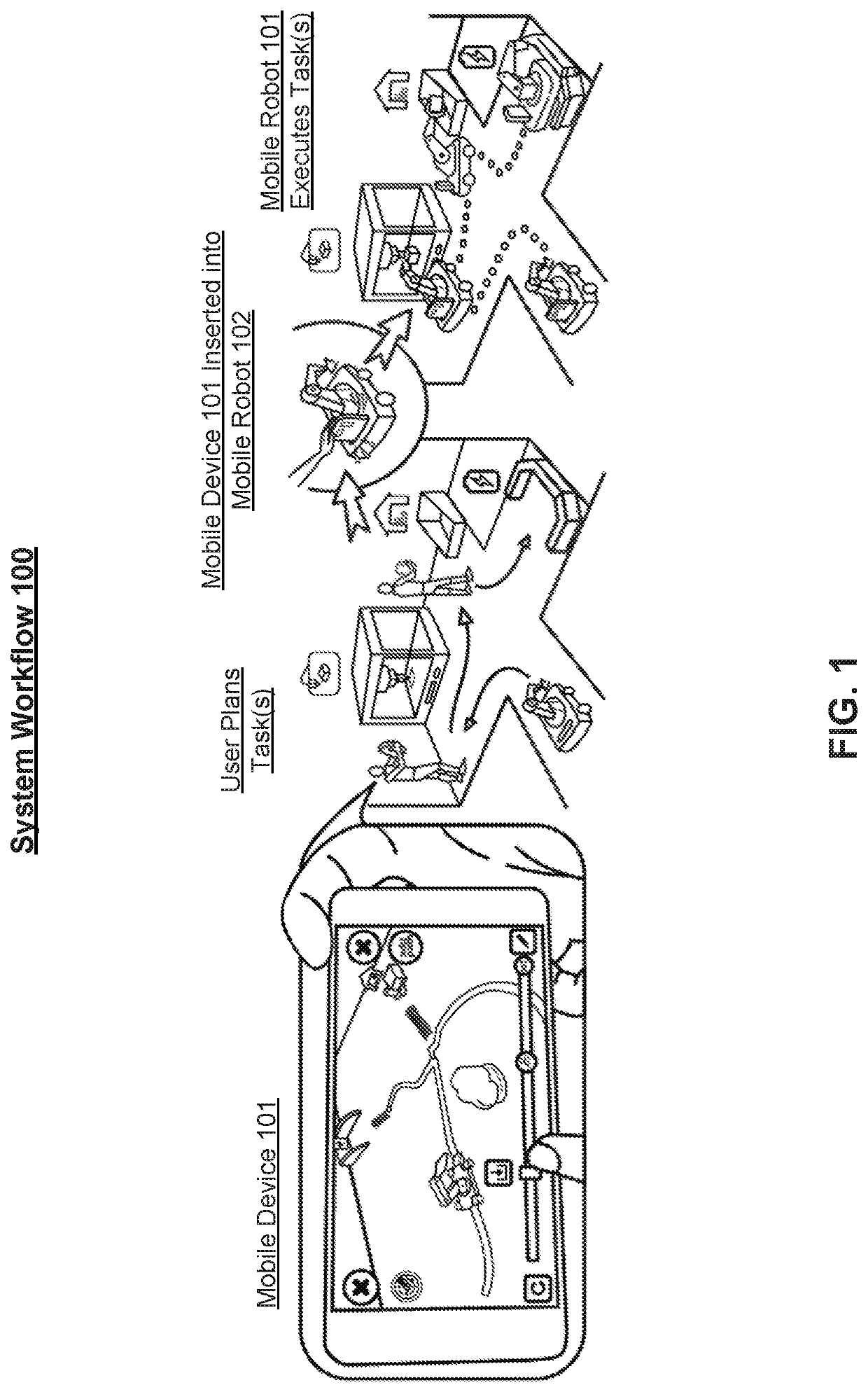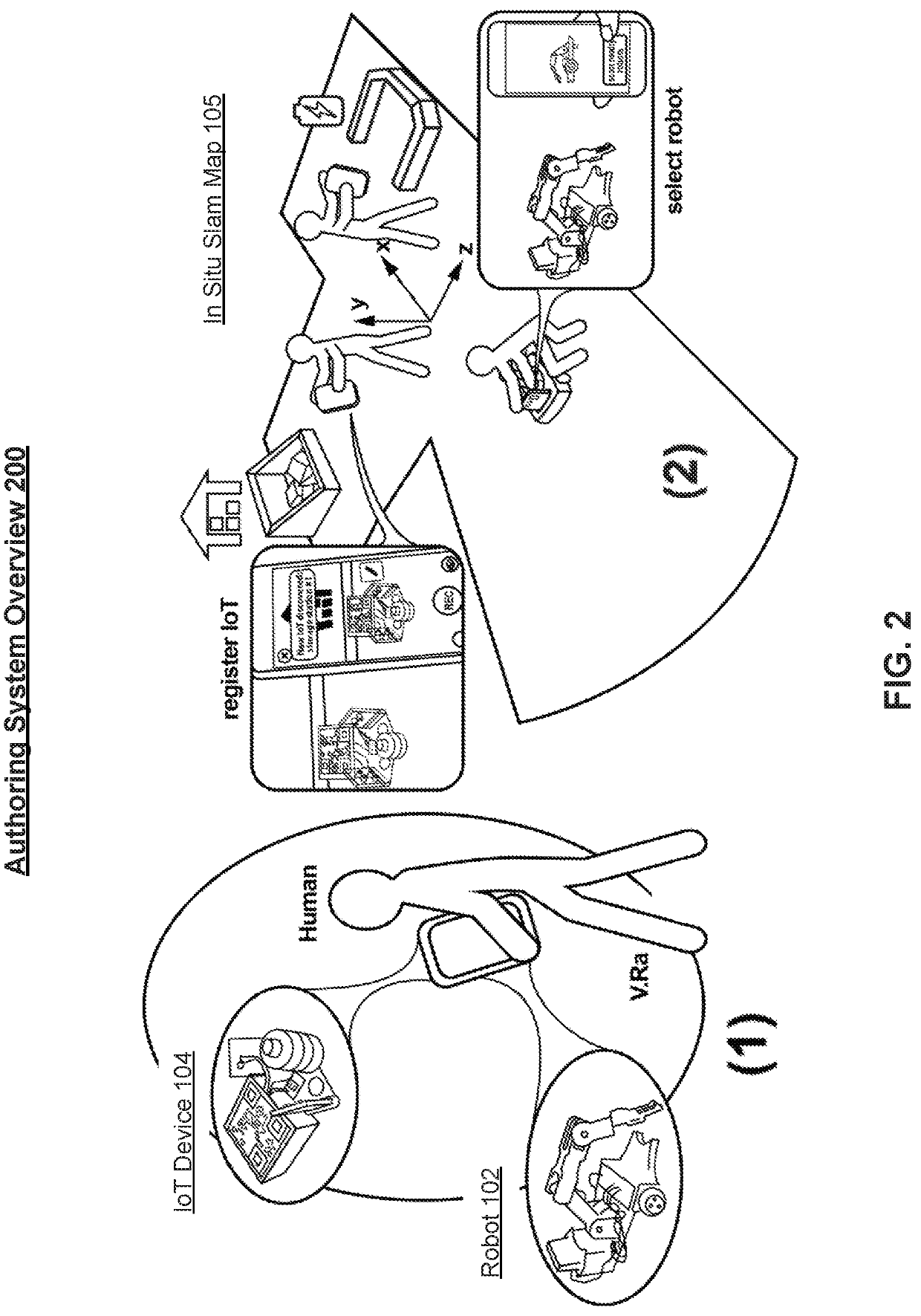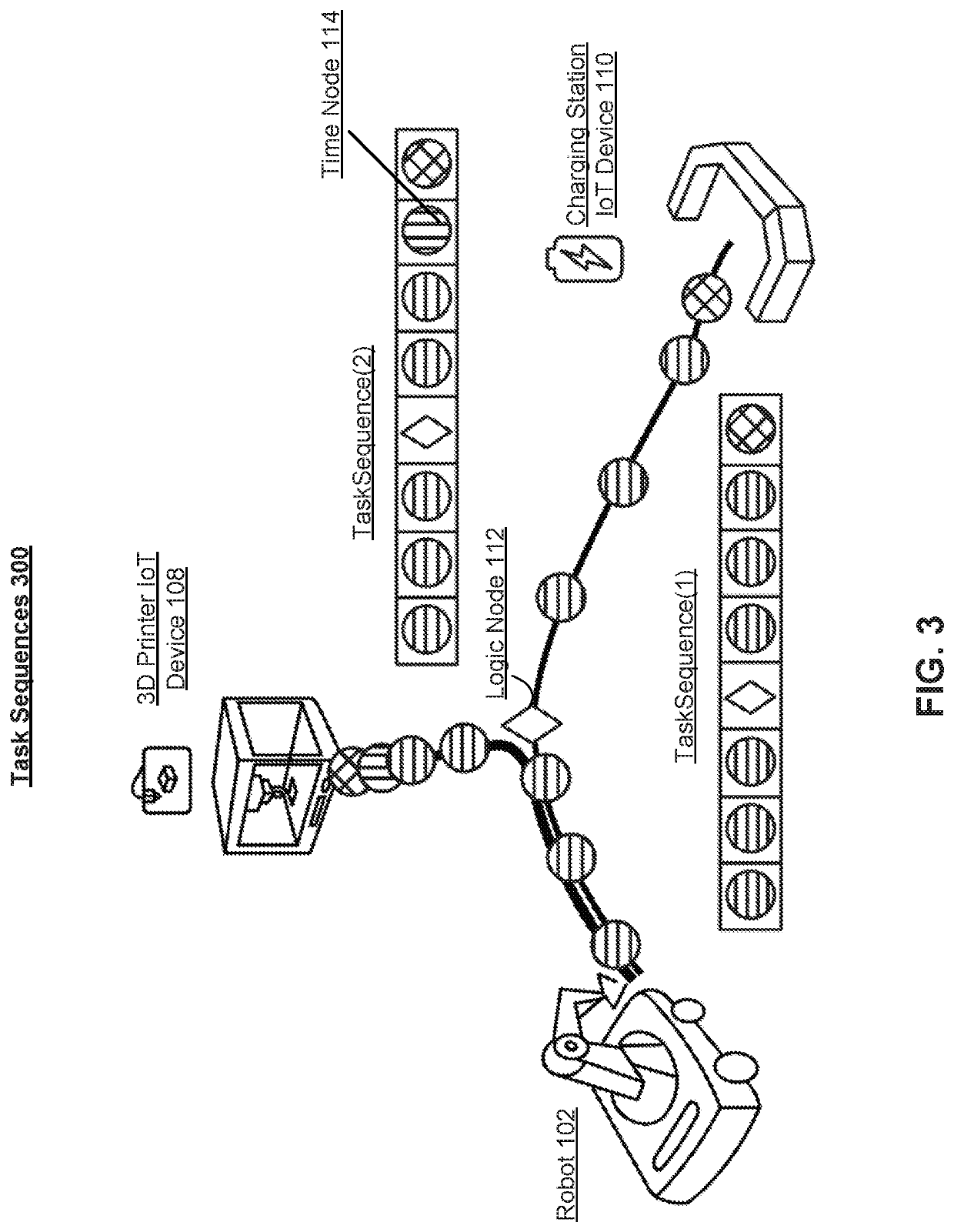Robot navigation and robot-iot interactive task planning using augmented reality
a robot navigation and task planning technology, applied in the field of robot navigation and task planning, can solve the problems of robots ad-hoc tasks which humans take for granted, the internet of robotic things has not been widely explored, and the authoring system for robot-iot interactive task planning remains underdeveloped
- Summary
- Abstract
- Description
- Claims
- Application Information
AI Technical Summary
Benefits of technology
Problems solved by technology
Method used
Image
Examples
example implementation
[0059]Software platform. In aspects, a software interface may be implemented as an application that runs on “ASUS Zenfone” AR mobile device. The AR-SLAM feature can be achieved using Google's software development kit Tango Core, and the application can be built with a “Unity3D engine.” The live task monitor feature can be implemented with a “WebRTC” video stream service. It is noted that Tango Core relies a built-in depth camera to produce point cloud-based user interaction. This device was chosen due to the technology availability at the time of initial development; however, the system is not limited to a depth camera-based Tango device. The virtual robotic assistant can be configured to be fully compatible with the latest AR-SLAM platforms which may use RGB cameras of regular smartphones other mobile devices (e.g., ARCore, ARKit) for SLAM and plane detection.
[0060]Hardware prototyping. FIG. 11 depicts a conceptual block diagram of an example embodiment of prototyped mobile robots ...
example use cases
[0074]Three different use cases are demonstrated to showcase the potential use of virtual robotic assistant system as set forth below.
[0075]Case 1: SweeperBot for smart floor cleaning. FIG. 13 depicts a conceptual block diagram of an example embodiment of a process for smart floor cleaning using a SweeperBot virtual robot assistant system in accordance with the teachings of this disclosure. In the illustrated embodiment, process 1300 comprises battery charging for 20 minutes (1), using a SpotSweeping feature to author the floor cleaning operations (2), using the mirror and / or loop feature to author repeated sweeping paths under the table (3), the SweeperBot cleaning the floor (4), and robust navigation under the table in poor lighting conditions (5). The first use case features a SweeperBot 144 as a mock-up representation of the commercial sweeping robots for user-defined smart floor sweeping. As opposed to commercial products that try to survey the entire room with very little user...
example processes
[0081]The following figures depict flow charts illustrating various example embodiments of processes for authoring navigation and robot-IoT interactive tasks for the programmable mobile robot to perform in a physical environment in accordance with the teachings of this disclosure. It is noted that the processes described below are exemplary in nature and are provided for illustrative purposes, and not intended to limit the scope of this disclosure to any particular example embodiment. For instance, processes in accordance with some embodiments described in this disclosure may include or omit some or all of the operations described below or may include operations in a different order than described.
[0082]The particular processes described are not intended to be limited to any particular set of operations exclusive of all other potentially intermediate operations. In addition, the operations may be embodied in computer-executable code, which may cause a general-purpose or special-purp...
PUM
 Login to View More
Login to View More Abstract
Description
Claims
Application Information
 Login to View More
Login to View More - R&D
- Intellectual Property
- Life Sciences
- Materials
- Tech Scout
- Unparalleled Data Quality
- Higher Quality Content
- 60% Fewer Hallucinations
Browse by: Latest US Patents, China's latest patents, Technical Efficacy Thesaurus, Application Domain, Technology Topic, Popular Technical Reports.
© 2025 PatSnap. All rights reserved.Legal|Privacy policy|Modern Slavery Act Transparency Statement|Sitemap|About US| Contact US: help@patsnap.com



